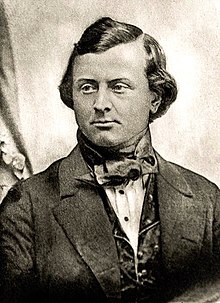Carl Bergmann | |
|---|---|
 | |
| Born | Karl Georg Lucas Christian Bergmann 18 May 1814 |
| Died | 30 April 1865 (aged 50) |
| Alma mater | University of Göttingen |
| Known for | "Bergmann's rule" |
| Scientific career | |
| Fields | Anatomy, physiology |
| Thesis | De placentae foetalis resorptione (On the resorption of the fetal placenta) (1838) |
Carl Georg Lucas Christian Bergmann (18 May 1814 – 30 April 1865), also known as Karl Georg Lucas Christian Bergmann, was a German anatomist, physiologist, and biologist. He developed Bergmann's rule (that populations and species of animals of larger size are found in colder environments).[1] He microscopically examined the cells of the retina to determine which of them convert light into neural signals that lead ultimately to visual perception: the cones and the rods.[2] Bergmann also coined the terms fovea centralis (for the very center of the retina),[2] homoiothermic (referring to warm-blooded animals), and poikilothermic (referring to non-homoiothermic animals).[3]
- ^ Bergmann's rule at Who Named It
- ^ a b Thibos, Larry; Lenner, Katharina; Thibos, Cameron (18 Dec 2023). "Carl Bergmann (1814–1865) and the discovery of the anatomical site in the retina where vision is initiated". Journal of the History of the Neurosciences.
- ^ Bergmann, Carl. In: Lexikon der Biologie auf Spektrum.de. Spektrum Akademischer Verlag, Heidelberg, 1999.